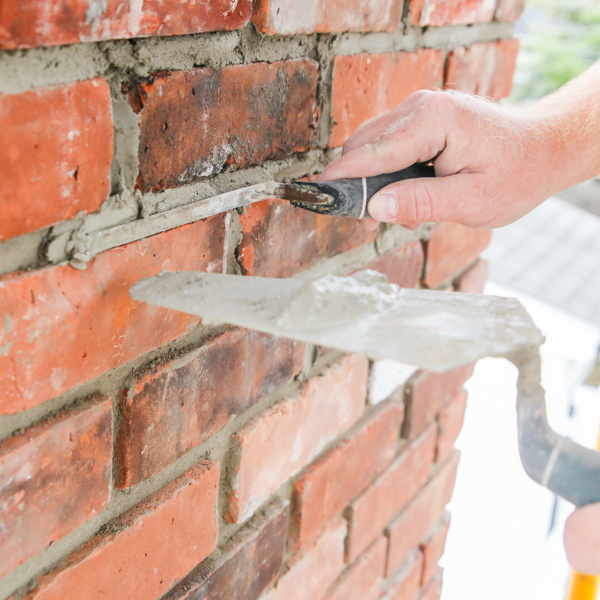Set Up a Chimney Sweep Today for a Tidy and Safe Fire Place
Set Up a Chimney Sweep Today for a Tidy and Safe Fire Place
Blog Article
Opening the Keys of Sustainable Masonry Building Practices for Eco-Friendly Buildings
Among the myriad techniques to environment-friendly building, lasting stonework building stands out as a time-tested and long lasting technique that holds a wide range of untapped potential. From the choice of products to cutting-edge building techniques, the keys to attaining sustainability within masonry building are multifaceted and intriguing.
Benefits of Sustainable Stonework Construction
Accepting lasting masonry construction techniques not only reduces environmental impact yet also supplies long-lasting economic advantages to home builders and areas. By using products like recycled blocks, blocks, and rocks, home builders can significantly reduce the carbon impact of their projects while promoting source performance. In addition, lasting masonry building and construction methods, such as proper insulation and thermal mass residential properties, can improve power effectiveness within buildings, causing reduced operational expenses with time.
Moreover, the sturdiness and durability of stonework frameworks add to lasting economic advantages. Structures created using sustainable stonework practices frequently require much less repair and maintenance, translating to set you back savings for home builders and homeowner. The longevity of stonework products likewise makes sure that frameworks stay steady and protected, reducing the demand for frequent restorations or replacements.
Eco-Friendly Stonework Materials
Using environment-friendly masonry materials is a crucial action in the direction of enhancing the sustainability of construction methods and minimizing environmental effect while taking full advantage of lasting financial benefits. Sustainable masonry materials are sourced, produced, and used in a manner that decreases overall ecological influence. Materials such as recycled blocks, reclaimed stone, and sustainable cinder block are coming to be significantly prominent options for eco-conscious builders. Recycled bricks, for instance, not just draw away waste from landfills yet likewise require much less power to generate compared to brand-new blocks. Redeemed rock supplies an one-of-a-kind aesthetic appeal while reducing the need for new quarrying. Sustainable concrete blocks integrate recycled accumulations and may feature improved insulation buildings, adding to energy effectiveness in structures.
Additionally, all-natural materials like adobe, rammed planet, and straw bales provide superb thermal mass properties, reducing the need for heating and cooling down energy. These materials are typically locally offered, promoting regional economic situations and reducing transportation-related carbon discharges. By choosing eco-friendly masonry materials, building projects can significantly reduce their environmental impact and contribute to the production of healthier, more lasting developed atmospheres.
Energy-Efficient Stonework Techniques
Energy performance plays an important duty in boosting the sustainability of stonework building techniques. By executing energy-efficient masonry strategies, contractors can substantially minimize the overall power consumption of a building, bring about lower operational costs and a smaller sized environmental impact. One vital energy-efficient masonry strategy is making use of thermal mass, which entails including dense products like concrete or block right into the structure's framework to take in and save heat. This helps control interior temperature levels, reducing the requirement for mechanical heating and cooling systems.

Advancements in Lasting Masonry
Current improvements in lasting stonework methods have he has a good point actually produced innovative strategies that are improving the construction market. One such development is the growth of self-healing concrete, which utilizes bacteria installed within the concrete to heal fractures autonomously. This advancement not just reduces upkeep costs however likewise enhances the durability of stonework structures, adding to their sustainability.
An additional significant advancement is making use of recycled aggregates in masonry building and construction - masonry contractor. By including products such as crushed ceramic waste or recycled glass into concrete mixes, building contractors can lower the environmental influence of building projects while preserving architectural integrity. This practice not just draws away waste from garbage dumps yet likewise preserves all-natural resources, making it an essential development in lasting masonry building
Additionally, the assimilation of electronic design devices, such as Building Info Modeling (BIM), is transforming the means stonework structures are planned and created. BIM allows for even more specific calculations, lowered product wastage, and boosted energy effectiveness, inevitably bring about even more lasting structure practices. These technologies jointly signify an appealing future for lasting masonry building and construction in the period of green buildings.
Future Trends in Masonry Sustainability
With the cutting-edge strides made in lasting stonework methods, the future fads in masonry sustainability are poised to further revolutionize the building sector. Among the key patterns shaping the future of stonework sustainability is the boosted integration of technology. Advancements such as Building Information Modeling (BIM) and online fact simulations are being used to optimize masonry building procedures, bring about minimized product waste and enhanced energy performance in buildings.
Furthermore, the advancement of unique lasting products is set to play a significant function in improving the eco-friendliness of masonry building. masonry contractor. Innovations like self-healing concrete, recycled aggregates, and bio-based binders are acquiring traction for their capability to minimize environmental impact while preserving architectural stability

Verdict
To conclude, sustainable stonework building and construction practices offer various advantages for green structures. By using green products and energy-efficient strategies, masonry can add to an extra sustainable developed atmosphere. Technologies in lasting masonry are continually being developed to even more boost the ecological performance of buildings. Looking in the direction of natural stone stamped concrete the future, the pattern of masonry sustainability is expected to grow, bring about even more eco pleasant and energy-efficient building and construction practices in the years to find.
Report this page